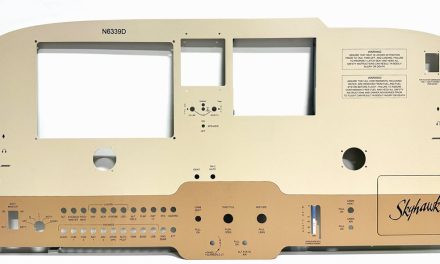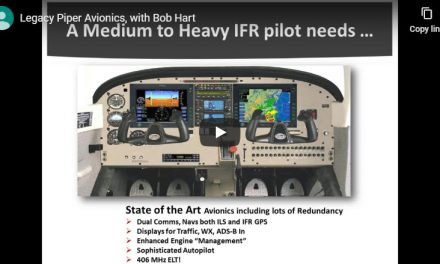
Photo courtesy of Pacific Coast Avionics
From the 1960s through 2004, aircraft manufacturers essentially equipped their aircraft instrumentation for VFR or light IFR flight. Engine information was often limited to fuel gauges, oil temp and pressure, gyro suction, alternator amps, and, typically, a single-channel EGT. More complex aircraft would also see manifold pressure and fuel flow. Even the Garmin G1000 avionics suite, introduced in 2004, only gave you the basics but did include a single-channel CHT. But we know that monitoring a single cylinder tells us little about the condition of our whole engine.
Using a single-channel EGT as a leaning tool is just wrong. IFR pilots usually want more information about their engine than that which is provided by the manufacturer and they were forced to go to the aftermarket to get it. JP Instruments, Insight Avionics, and Electronics International have all made a “living” filling that void. On the high end, we also had Ultra Avionics, but that option is gone. We’ll save the high-end primary engine management systems for next month. This month, let’s talk about engine analyzers.
Unlike primary, high-end management units that replace many, most, or all of your factory engine instruments, engine analyzers augment your factory gauges and essentially fill in many of the blanks that IFR pilots want and they do it on a budget by comparison.
Your factory gauges remain even though the better of the available engine analyzers will duplicate many of the same engine parameters and do a better job at it than factory mechanical units. There are basic analyzers that simply monitor CHT and EGT in all cylinders and at the same time use this data to provide best leaning practices. In my opinion, leaning your engine correctly is a significant benefit of even the most basic engine analyzers on the market! With today’s fuel prices (fuel was 45 cents per gallon when I learned to fly in 1972), leaning your engine saves fuel and, if you do it correctly, saves your engine. There are engine analyzers that go way beyond CHT and EGT and monitor a wide range of engine parameters including fuel flow and pressure, manifold pressure and rpm, percent of horsepower, and one manufacturer that even measures vibration and g-forces! So, let’s take a look at what is available in engine analyzers for the well-equipped VFR pilot, light IFR pilot, or even the medium IFR pilot on a budget. We will start with more basic, lower-cost units from each manufacturer, listed alphabetically, and work our way up.
The rest of this article can be seen only by paid members who are logged in.Have a website login already? Log in and start reading now.
Never created a website login before? Find your Customer Number (it’s on your mailing label) and register here.
Still have questions? Contact us here.




